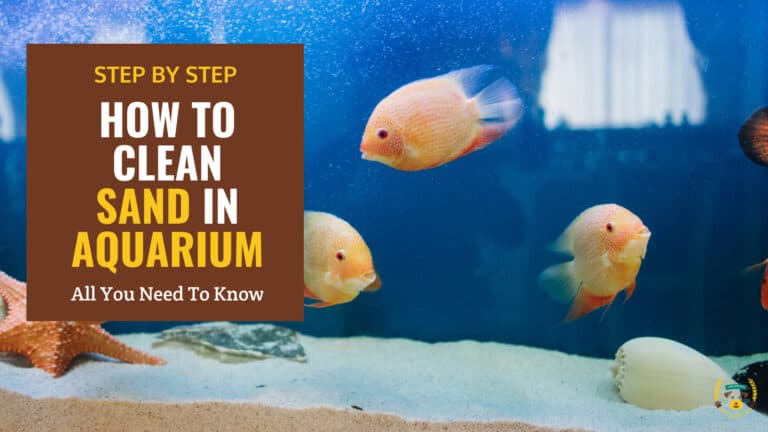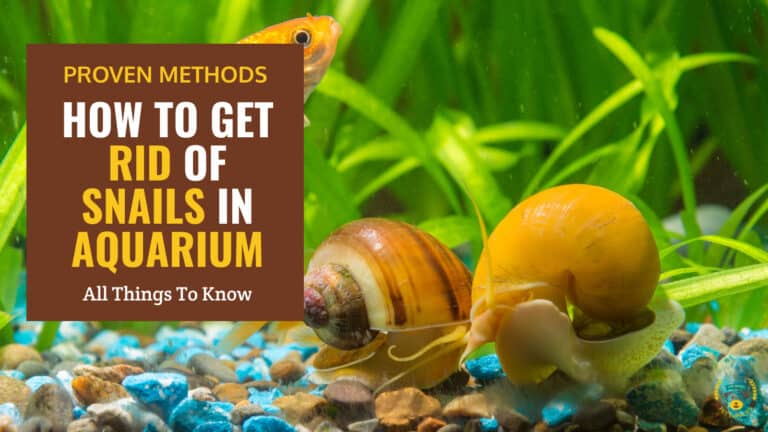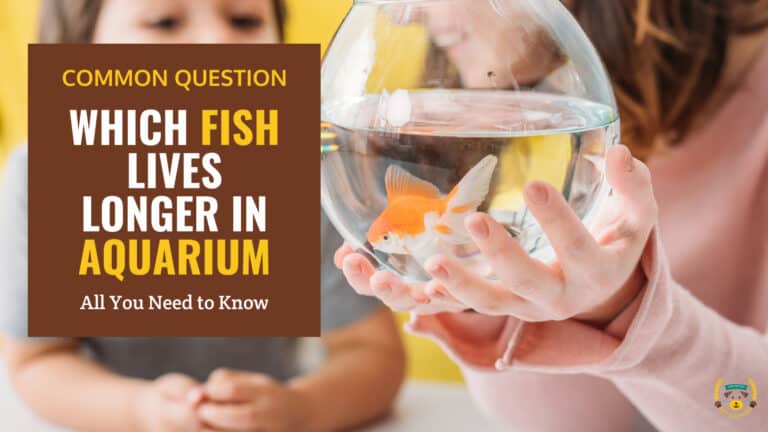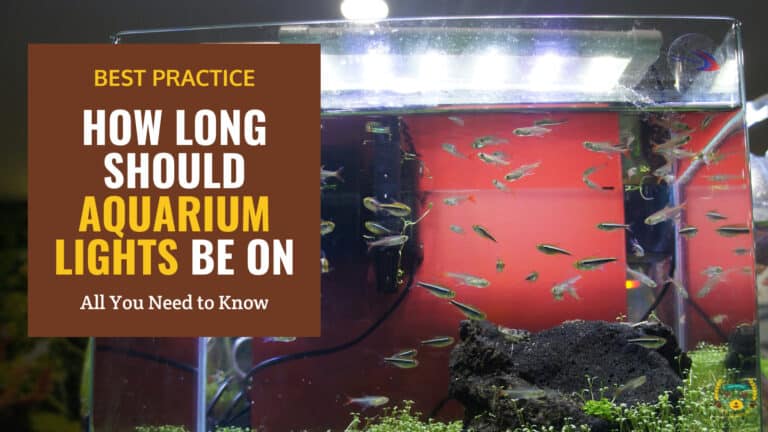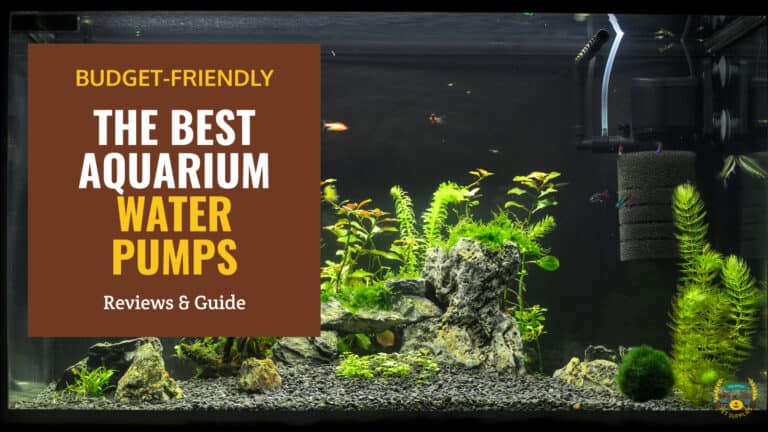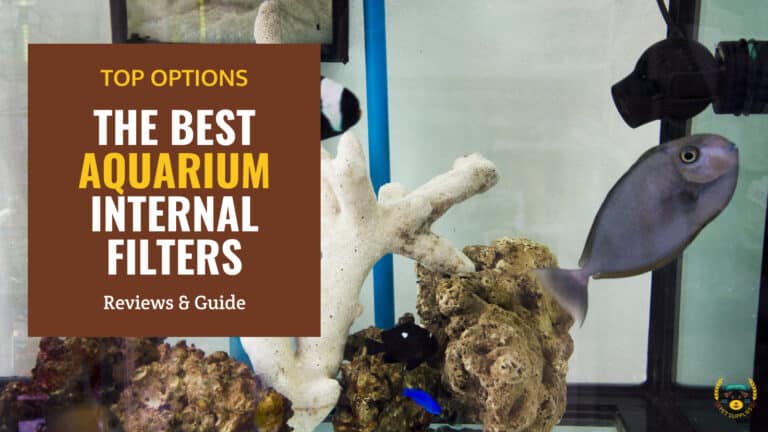How To Clean Your Fish Tank: Step By Step Guide
Last updated: March 29, 2024
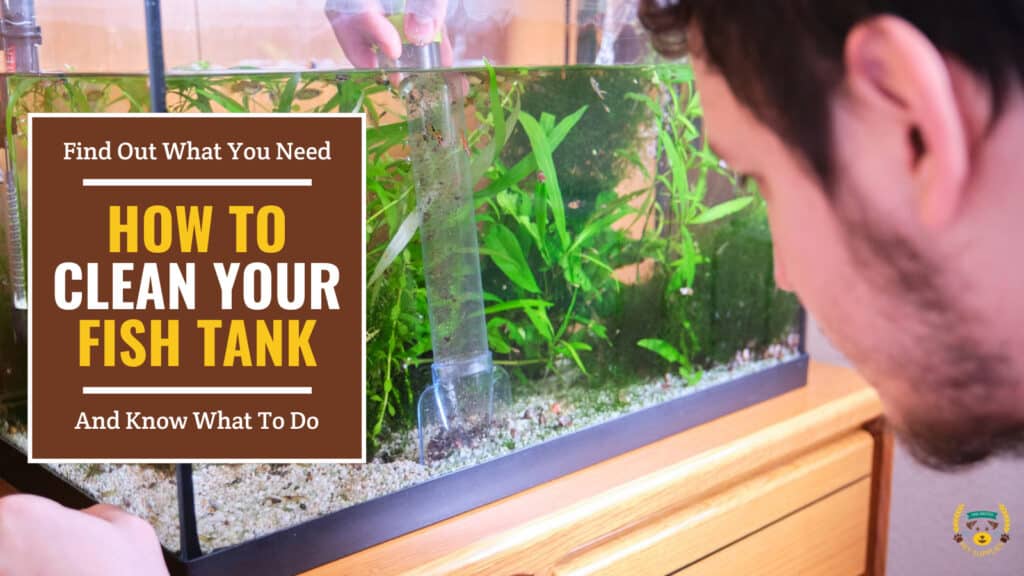
Summary
- Scrape the inside walls of the tank with an algae scraper.
- Remove stubborn residues with a razor blade or plastic scraper.
- Clean the decorations with warm water and an algae scraper.
- Vacuum the gravel with a gravel vacuum.
- Replace 25% of the water with dechlorinated water.
- Clean the outer fixtures of the tank with an ammonia-free glass cleaner or vinegar.
Have you ever thought of how Nature's cleaning process works in the big water tanks of water, a.k.a oceans or rivers? Well, a single paragraph won't suffice in describing this phenomenon. In short, Nature and its workers do the job. First, they clean the sides and do the filtration; this way, things go on.
An aquarium or a domestic fish tank mimics those oceans and rivers, so its cleaning process resembles the seas.
Keeping aquariums is a healthy hobby. You have to take excellent care of those fragile beings called fishes. They add beauty to one corner of your home and give you another reason to experience life happening.
How To Clean Your Fish Tank

Although some of the little swimmers self-clean in their tanks occasionally like catfish, shrimps, snails, and some algae eaters, most fish tanks also have filters to keep the invaders away. But, due to the overfeeding or abnormal light exposure, the algae start making colonies which might sometimes choke the fish and make the water cloudy and smelly.
For this purpose, a weekly or bimonthly cleaning spree is essential for their easy survival.
The nitrates and metabolites buildup in different parts of the aquarium might not be beneficial for your favorite fishes, so a full-fledged service with chemicals and other necessary weapons is essential.
Things You'll Need:
Fish in your fish tank are super sensitive to soaps and chemicals. So you have to get a few things from your pet store to ensure that these beautiful creatures' cleaning process remains harmless.
Some of these things are not necessary, but others complete the process.
1- Algae Scraper
Get a particular type of algae scraper that is specially made for pet cleaning purposes and non-toxic for the fish in the tank.
Get your desired algae scraper from here.
2- Razorblade/Plastic Scraper
Another necessary item is a razor blade for your glass tanks and a plastic blade for the acrylic fish tanks.
Get these blades for those stubborn remains of nitrates from here and here.
3- Bleach
A minimally diluted bleach mixture is recommended to clean the decorations only when they are out of the aquarium. It should be a 5% bleach mixture in the water for live plants.
Here is the link for bleach powder. Get the pack from here.
4- Gravel vacuum (Water siphon)
All the stubborn debris has to get out of the tank with this special gravel vacuum.
Get one from here.
5- Bucket
Always use a new bucket for cleaning the fish tank to avoid the soap or previous detergent residue.
Get your favorite color bucket from here.
6- Aquarium-specific Glass cleaner
General glass cleaners contain ammonia which can be lethal to your fish. Get one designed for the aquarium to keep the fishes away from any risk from here.
7- Filter media
Though cleaning the filter media will be needed after a couple of weeks, getting all things at once might not cost as much as buying them separately.
Get it from here.
8- Filter brush
Get a filter brush to clean the tubes and other parts of the filter from here.
Let's Get Started!
You should follow these steps to clean your fish tank with perfection. Start by washing your hands.
Inside Walls of The Fish Tank
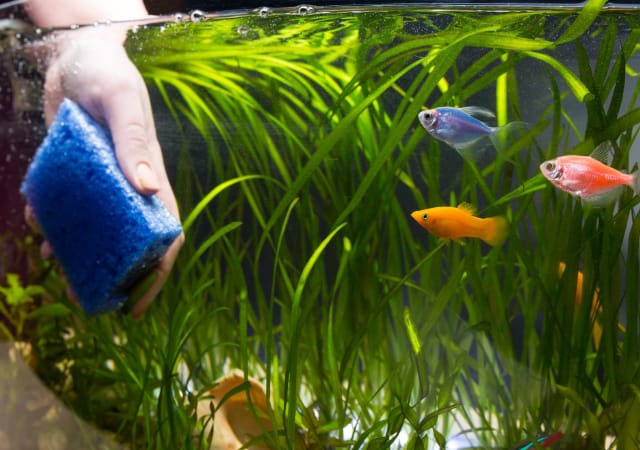
With clean hands, start scrubbing the inside walls of your fish tank with an algae scraper. This algae scraper or pad is mainly used for pets, unlike the one used to clean houseware. These scarper never let the soap or detergent particles stay on them and are so safe for the fish in the tank.
After the alga clean-up, some more stubborn residues in the fish tank need to be cleared with the help of a razor blade (in the case of glass walls) or a plastic scraper (for acrylic walls).
Handle the razor blade with precautions and stay easy with the plastic scraper so that it may not cause scratches on your acrylic fish tank.
Take Out The Removable Decorations
Now it's time to clean up the decorations, artificial plants, and rocks.
Take them out and clean them with warm water using the algae scraper. For those stubborn remains, soak the things in the 10% diluted bleach for 15 minutes and then air dry them thoroughly.
If you still find that irritating chlorine smell, wash them with water that has chlorine remover or sodium thiosulfate.
Gravel Debris Cleaning
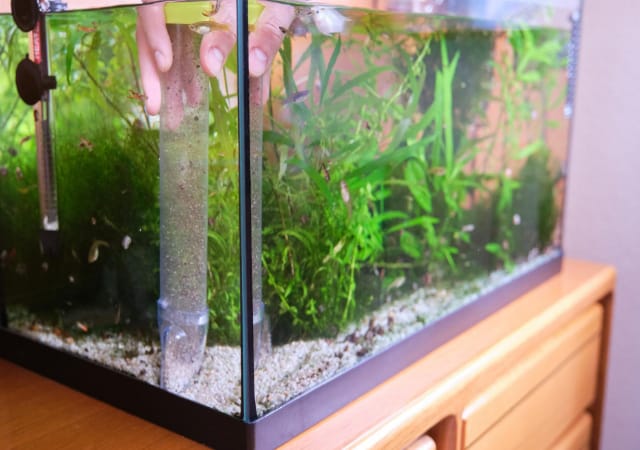
Gravel for a layman is the decorative stones kept in the bottom of a fish tank. They have nutrients and minerals and accept the debris from fish waste, leftover fish food, and dead plants. Therefore, cleaning gravel is a crucial step in cleaning the fish tank.
For this purpose, a special vacuum known as a water siphon is used. The siphon gently vacuums up the debris by stirring up the gravel.
For sand substrates, however, a slightly different cleaning method is recommended. Refer to our guide on how to clean sand in an aquarium for detailed instructions on maintaining a pristine sand bed in your aquarium.
Water Replacement
The water taken away during the gravel vacuuming must be returned as dechlorinated water. Almost 25% of water replacement is a good quantity for the monthly service. It would be best if you kept in mind to switch the tank's heater while performing the water change.
Glass Tank Outer Parts and Hood
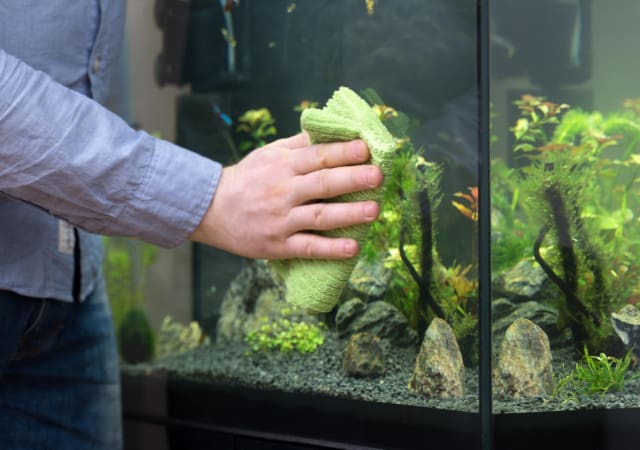
The last step is to clean the outer fixtures of the tank, such as the tank top, hood, light, and the outside of the glass or acrylic.
For this purpose, ammonia-free or pure vinegar is recommended to be used for cleaning purposes and not regular glass cleaners since they may contain ammonia that can be hazardous to your fish in the tank.
Don’t Clean the Filter Before Two Weeks
Everything great has a price, and this cleaning service has been charged as causing the disturbance in the bacteria colonies that are good for the fish.
But, the good news is that filters are the only thing left untouched, so you haven't disturbed the whole bacterial colony in the fish tank. That's why it is recommended to clean the filter after a couple of weeks so that the other parts of the aquarium may get their bacterial growth back.
The filter can be cleared by changing the entire media every 2-3 weeks if it contains an ammonia or carbon absorber. However, a filter brush can suffice for cleaning the other type of filter media (ceramic rings, fiber, or foam).
Here's a video (7 minutes 22 seconds) that can help guide you when cleaning your fish tanks!
Frequently Asked Questions :
You might come across some questions while performing the task of cleaning the fish tank. We have listed some of the queries frequently asked by aquarium owners.
How Often Does the Aquarium Need Cleaning?
If you follow the above-mentioned cleaning steps, you might skip one week and sometimes repeat the steps after 2-3 weeks. That's what the professionals recommend.
Do I Have to Take Out the Fish?
Never. Please do not take the fish out of the water they are used to living in. They might get stressed and die very soon if transported from one tank to another.
Why Should I Clean My Aquarium?
Fish are one of the most low-maintenance pets. They don't usually want your time and attention, unlike other pets. However, they add a beauty factor to your home.
For all the above reasons and more, you should prioritize cleaning your fish tanks once every two weeks.
Conclusion :
You will never feel bored while watching the life (fishes) moving. They do reply to your knock on their home(fish tank). The clean fish tank keeps your swimming buddies happy and healthy.
So, to never let the 'finding Nemo' incident happen in your fish tank, keep it clean. Just follow the steps we have compiled for you and keep your little Nemo and Dory with you in their tank.
In addition to regular maintenance, the choice of aquarium can greatly impact the health and well-being of your aquatic friends. If you're considering upgrading your current setup or starting a new underwater journey, explore our 2025 guide to fish tanks for insights on the latest and greatest options available.

